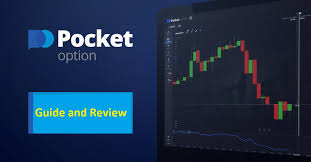The Ultimate Guide to Pocket Option Trade

The Ultimate Guide to Pocket Option Trade
If you are interested in binary options trading, Pocket Option Trade торговля Pocket Option is a platform that can provide you with a host of opportunities. Understanding how to navigate this trading environment is essential for anyone aiming to make a profit. To succeed, traders need to familiarize themselves with the platform’s features, market analysis techniques, and effective trading strategies. This comprehensive guide will cover everything from the basics to advanced strategies, giving you the tools you need to excel.
What is Pocket Option?
Pocket Option is a binary options broker established in 2017. Since its inception, it has gained popularity due to its user-friendly interface and a wide range of trading options. It allows traders to speculate on the price movements of various financial assets, including currencies, commodities, and stocks. The platform is known for its low minimum deposit requirements and high payouts, making it accessible to both novice and experienced traders.
Accounts and Deposits
To start trading on Pocket Option, you need to create an account. The registration process is straightforward, requiring only your email address and personal details. Pocket Option offers various account types to suit different trading needs, including standard and premium accounts. The minimum deposit is relatively low, allowing users to start trading with just $50. Additionally, the platform supports multiple payment methods, including credit cards, e-wallets, and cryptocurrencies, making it easy to fund your account.
Understanding the Trading Interface
Once you have set up your account, it’s crucial to familiarize yourself with Pocket Option’s trading interface. The layout is relatively intuitive, featuring charts, asset lists, and trade options. Traders can choose between a variety of assets and set the expiration time for their trades, which can range from 60 seconds to several hours. The platform also provides real-time price movements and indicators to help traders make informed decisions.
Types of Trades
Pocket Option offers several trading options, including traditional binary options, long-term options, and turbo options for quick trades. Each type of trade has its unique characteristics:
- Binary Options: The most common type of trade, where traders predict whether the asset price will rise or fall within a specified time frame.
- Long-Term Options: These options allow traders to hold their positions for a longer duration, typically ranging from hours to days.
- Turbos: These are short-duration trades that expire in less than five minutes, suitable for experienced traders looking for quick returns.
Market Analysis Techniques
Successful trading requires a solid understanding of market analysis. There are two primary types of market analysis that traders use:
Technical Analysis
Technical analysis involves studying price charts and using indicators to predict future price movements. Traders often use tools like moving averages, RSI (Relative Strength Index), and support/resistance levels to make trading decisions. Mastering technical analysis can give traders an edge in identifying trends and potential reversals in the market.
Fundamental Analysis
Fundamental analysis, on the other hand, involves evaluating economic news and events that may impact the price of an asset. Economic indicators, such as employment rates, interest rates, and geopolitical events, can significantly influence market prices. Staying updated with financial news and understanding the economic landscape is vital for traders who want to enhance their decision-making process.

Effective Trading Strategies
To maximize profits and minimize losses, traders should employ effective trading strategies. Below are some popular strategies used by successful traders:
The Trend Following Strategy
This strategy capitalizes on market momentum. Traders look for assets that are trending upwards or downwards and place trades in the direction of the trend. The key is to enter a trade when the trend is strong and maintain it until signs of reversal appear.
The Breakout Strategy
In breakout trading, traders analyze key support and resistance levels. When the price breaks above resistance or below support, it often signals the start of a significant price movement. Traders will place trades in the direction of the breakout, aiming to capitalize on the ensuing trend.
The Range Trading Strategy
This strategy works best in a sideways market where prices oscillate between well-defined support and resistance levels. Traders will buy at the support level and sell at the resistance level, executing trades based on the price range.
Risk Management
Effective risk management is crucial for long-term trading success. Traders should never risk more than 1-2% of their trading capital on a single trade. This approach minimizes the impact of losing trades on the overall account balance. Additionally, setting stop-loss and take-profit orders can help manage profitable trades and limit potential losses.
Pocket Option Bonuses and Promotions
Pocket Option often runs promotional campaigns and offers bonuses for new and existing traders. Bonuses can provide traders with extra funds to enhance their trading experience. However, it is essential to read and understand the terms and conditions associated with bonuses, as they often come with specific requirements.
The Importance of Practice
Before diving into real trading, it is advisable to practice using a demo account. Pocket Option offers a demo account that allows users to trade with virtual money, enabling them to hone their skills and test strategies without any financial risk. Practicing on a demo account can boost your confidence and prepare you for real trading.
Final Thoughts
Pocket Option is a promising platform for binary options trading, offering a variety of features suited for both beginners and experienced traders. By understanding how to use the platform effectively, applying market analysis techniques, employing suitable trading strategies, and practicing proper risk management, traders can improve their chances of success. Always remember that trading involves risks, and continuous learning and adaptation are key to thriving in this dynamic market.

